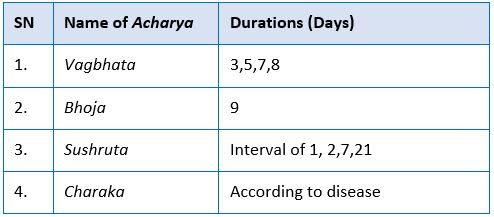The Application of Nasya in Paksaghata
DOI:
https://doi.org/10.21760/jaims.9.7.42Keywords:
Pakshaghta, Hemiplegia, Vatavyadhi, Nanatmaja Vata Vikaras, Avapeedana NasyaAbstract
The Vatavyadhis include Pakshaghata is one. That resembles the medical disease known as a stroke in the cerebrovascular area. Ruja, Vakstambha, and other Lakshanas are among them. There are two varieties: Pittanubandha and Kappanubandha. Though Pakshaghata is a Vata Vyadhi and, it is not a Shuddha Vataja condition, according to Charaka's Nanatmaja Vatajavikaras. Susrutha and Madhava Nidana speak of Samsarga of Pitta and Kapha in detail. The fundamental reason of the illness is evident in all of the previously given theories, which link Raktadushti to Vata Prakopa. Cerebrovascular accidents rank third in the world in terms of causes of death, with acute stroke accounting for one out of every ten deaths. Acute stroke symptoms can be mistaken for Pakshaghata, one of the 80 varieties of Nanatmaja Vata Vikaras, because Kevalavata Vyadhis are hard to treat. The patients' physical disabilities persist even after the treatment, demonstrating the global potential of Ayurveda. As Kevalavata Vyadhis are difficult to heal, signs and symptoms of acute stroke can be misinterpreted as Pakshaghata, one of 80 forms of Nanatmaja Vata Vikaras. Ayurveda is demonstrating its global potential as people continue to experience physical disability even after receiving the most recent treatment. Thus, an attempt is made to illustrate the part played by Avapeedana Nasya in the administration of Pakshaghta.
Downloads
References
Vaidya Harishchandra singh kushawaha edited, Charaka samhita, chikitsa sthana, 28/53-54,1stedition 2009, Published by Chaukamba sanskrit sansthana. Varanasi. Page no. 740.
http;//www.strokeforum.com./stroke–backround/epidemiology.html
Kaviraja Ambikadutta shastri edited, Sushruta samhita chikitsa sthana, 5/18, Volume 1, reprint 2012, Published by Chaukamba Sanskrit sansthana. Varanasi. Page no. 32.
Vaidya Harishchandra singh kushawaha edited, Charaka samhita, chikitsa sthana, 26/152,1st edition 2009, Published by Chaukamba sanskrit sansthana. Varanasi. Page no. 699.
J.L.N. Sastry edited, Dravayaguna vijnana, volume –2, reprint edition 2010, Published by Chaukamba orientalia, Varanasi. Page no. 871.
J.L.N.Sastry edited, Dravayaguna vijnana, volume-2, reprint edition 2010,Published by Chaukamba orientalia, Varanasi. Page no. 448.
J.L.N.Sastry edited, Dravayaguna vijnana, volume-2, reprint edition 2010,Published by Chaukamba orientalia, Varanasi. Page no. 452.
J.L.N.Sastry edited, Dravayaguna vijnana, volume –2, reprint edition 2010, Published by Chaukamba orientalia, Varanasi. Page no. 152.
J.L.N.Sastry edited, Dravayaguna vijnana, volume-2, reprint edition 2010,Published by Chaukamba orientalia, Varanasi. Page no. 430.
Shah,Vanclay, F.cooper,V. (1989) Improving the sensitivity of Barthel index for stroke rehabilitation, Journal of clinical epidemiology, page no 42,703-709















